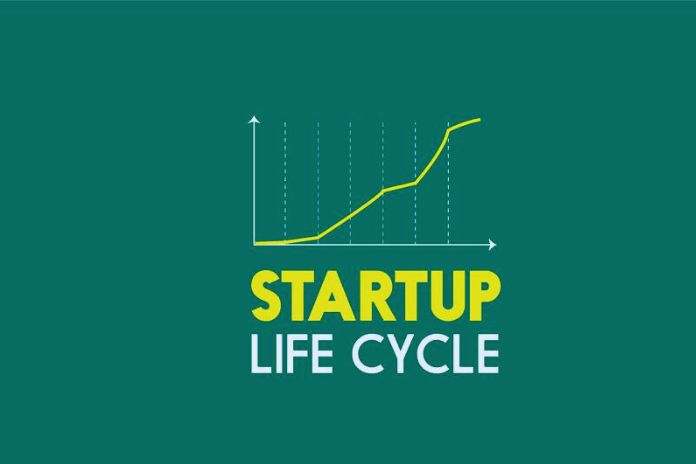The life of a startup is full of events and full of difficulties. In its continuous evolution, it is necessary to understand the various steps to optimize efforts and results. How is a startup born? How does it grow? When does it receive funding? How does its life cycle end? Let’s look at the steps in the life cycle of a startup. It is a path you must keep in mind to carefully plan the steps to bring your business idea to fruition.
Bootstrap
In the bootstrap phase, also known as pre-seed, the startup’s founder has not yet created a product or service to present to the public but has recognized a problem or market interest in a certain area. In this first phase of a startup’s life, there still needs to be results to be presented to potential investors to receive funding.
Therefore the startup is usually financially supported by the founder himself or by those who fall into the “3 F” category, from English: family, friends, and fools; i.e., friends, family, and fools. This support comes not so much from the idea behind the project but from the founder’s credibility in the eyes of the people close to him. Previous skills in the sector where you want to operate and the ability to best tell your business idea are essential to convince any investors in such an initial project phase.
Seed
The seed phase is entered when a product or service is already being set up, and therefore, the MVP (Minimum Viable Product) phase is reached, in which the service is proposed on the market, and the first feedback from users is received, thus generating the first traction metrics. In this phase, you can start looking for investors and ask for initial funding after preparing accurate business pitches and financial plans. In the panorama of startups in Italy, an average of 20 to 40 thousand euros can be received from the so-called business angels during the seed phase.
Early Stages
In the early stage, the product or service proposed by the startup is officially launched and must reach as many customers as possible. It will therefore be necessary to establish a good customer acquisition strategy by evaluating the channels with which this can be done and at what cost. Furthermore, with the market’s response, it will also be necessary to make some changes to the product so that it more fully satisfies the needs of the public to which it is addressed.
This alignment between product and market need is called Product Market Fit, primarily evaluated through sales volume. The early stage is when a startup can secure a new round of more substantial funding provided by Business Angels, equity crowdfunding platforms, and venture capital firms; the latter is particularly interested in high-risk investments that bring a high return.
Growth
If all the previous life phases of the startup have been successful, we arrive at the growth phase, in which particular attention will be paid to marketing to grow rapidly. A startup’s major investments in the growth phase aim to expand a robust marketing strategy and grow its team by hiring new staff. In this phase, a startup needs hundreds of thousands of Euros; therefore, to obtain them, it must demonstrate its excellent growth potential and resort again to venture capital companies, equity crowdfunding, and initial financing, so-called Serie A.
Scale Up
A startup reaches the scale-up period when it targets an international market. This brings a new round of investment and spending on the horizon. For example, the need for a new headquarters that gives prestige to the startup, new offices and foreign branches, and expansion of the team with even more qualified members. Some startups decide to liquidate the first investors in this phase and choose new ones with more ample financial resources, as to complete all the maneuvers listed above, funding in the order of millions of Euros will be needed.
Exit
The life cycle of a startup can be concluded in various ways in the final phase of exit.
- The entry of a startup on the stock market, i.e., on the stock exchange, takes place through an IPO (Initial Public Offering).
- Acquisition by a larger company is another way a startup reaches its end of life. This solution allows all the previous investors and the founder to be liquidated in one go, who will often be invited to continue working on his product within the new company.
- Another solution is the buy-back, which occurs when the founding partners liquidate all the investors, thus repurchasing all the shares in the startup.
If one of the exit strategies fails to be achieved, the startup’s future has the prospect of continuing to grow as a large company. From an organizational point of view, this implies that the founder and the original partners still have capital involved in the enterprise and are still waiting to be able to monetize the initial investments. We no longer speak of startups but small and medium-sized enterprises (SMEs).
The Cycle Of A Startup, Not Just A Theory
The world of startups is a dangerous world full of adversity. According to an estimate by Forbes, only 10% of startups successfully conclude their life cycle, while 90% fail along the way. For this reason, the world of startups can be seen as a funnel from which few companies emerge successfully. However, this statistic should not discourage those who have good ideas and want to try to bring them to market, nor those who want to become a business angel or investor. On startup news, you will find advice, experiences, and news that help you navigate the dangerous waters of the dynamic world of startups.
Also Read: How Has 5G Changed The Experience Of Gaming On A Smartphone?

